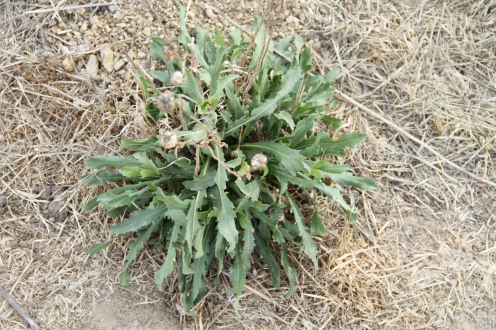GUMPLANT!!
One of my favorite native medicine plants. My partner Kellee and I went for a hike the other day and she took some great pictures of this amazing little plant. They are maturing nicely on our local trails. These pictures are from Victory trailhead of the Santa Monica Mountains. Luckily they like lots of sun, because that’s about all they’ve gotten in the past year, with the exception of the recent sprinkles. It amazes me that such a fleshy green plant thrives on the hot hillsides here in Southern California. I usually find them right on the side of the trails in relatively dry areas. In my experience, this medicine plant is pretty scarce here in our Southern California hills, so it’s a great candidate for growing in your own home medicine garden. Especially with it’s beautiful flowers.
(more text below picture)
And what a medicine it is, a gift from our co-evolution as partners in symbiosis. Known by sciency folk as Grindelia camporum (ooooo, fancy), Gumplant is primarily a medicine for our respiratory system. The Chumash and other native peoples use it for asthma, bronchitis, coughs, sore throats, and even tuberculosis. It was even used clinically for these conditions in the U.S. and the U.K. from the 1880’s until 1960. What happened in 1960? A U.S. law was passed requiring clinical proof of effectiveness for all drugs. This law is not all bad, and in a perfect world would protect patients from bad or ineffective treatments. Unfortunately we don’t live in a perfect world, and research takes money. Nature’s gift of Gumplant is not patentable and therefore not profitable. Nobody funded the research even though it’s effectiveness was evident in it’s years of clinical use. (C. Garcia & J.Adams, “Healing With Medicinal Plants of the West”)
(more text below picture)
Luckily you don’t need FDA approval to make and use plant medicines. According to James D. Adams Jr, professor of pharmacology at USC, it is at the very least safe to use Grindelia camporum for “coughs, sore throats, and minor respiratory problems.”
Gumplant should not be used by those with existing kidney or heart issues. Taking Grindelia in excessively large doses could irritate the kidneys.
Grindelia can come in various forms or be an ingredient in other products. To use an infusion, take 1 teaspoonful of the dried herb in 1 cup of boiling water and let sit for 10 to 15 minutes. Drink 3 times a day. For using a tincture, take 1-2 ml 3 times a day. In treating asthmatic conditions, Grindelia works very well.
In it’s clinical use as well as it’s traditional use, Gumplant was usually combined with Yerba Santa (Eriodictyon crassifolium), known by the Chumash as wishap (pronounced weeshap). This is another wonderful plant for treating respiratory issues. I’m tempted to say more, but I’ll leave wishap for it’s own full blog post.
An alcohol extract of Gumplant can also be used externally for poison oak rash and minor skin problems.
(more text below picture)
Make sure you properly identify plants before using. Gumplant can be easily identified by it’s distinctive bright yellow flowers with a spiky looking bulbous portion just below the flower. Gumplant dies back and regrows each year, so if the flowers haven’t come yet, you can usually see the distinctive dry seed-heads from the year before as in the first picture of this post. Below are a couple of great pictures of the flowers.
Always follow recommended dosages.
DISCLAIMER: This article is not meant to diagnose or prescribe. Use at your own risk, and if you have any doubts contact a professional.
(Click on the pretty flower to be linked to another good resource on Gumplant)
Resources:
“Healing with Medicinal Plants of the West” by Cecilia Garcia & James Adams Jr
http://www.pfaf.org/user/Plant.aspx?LatinName=Grindelia+camporum
http://www.naturalstandard.com/index-abstract.asp?create-abstract=gumweed.asp&title=Gumweed




